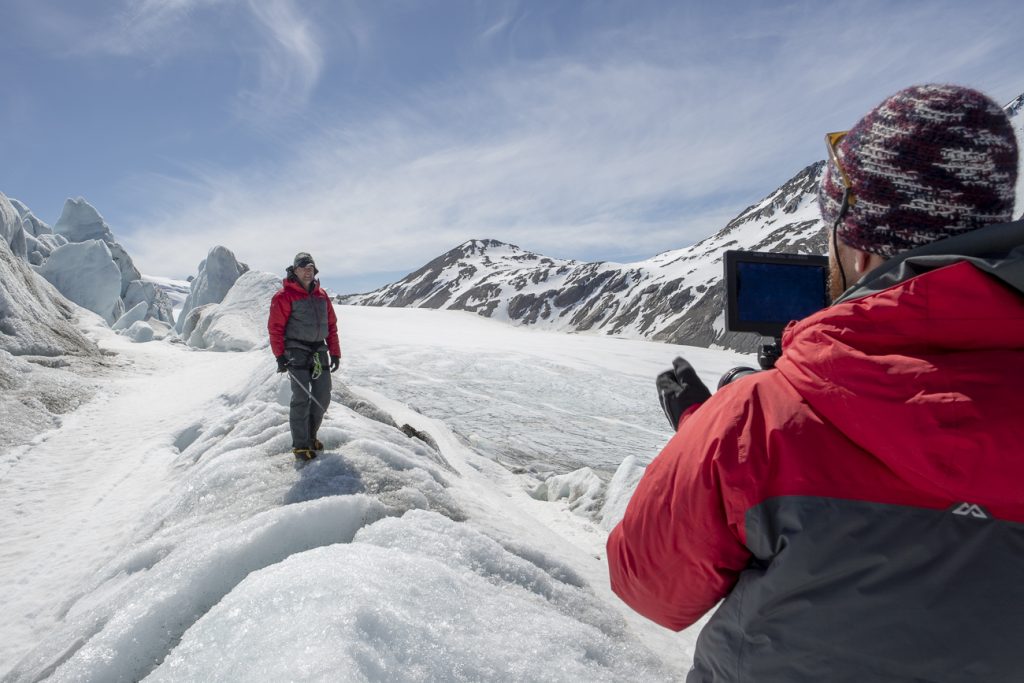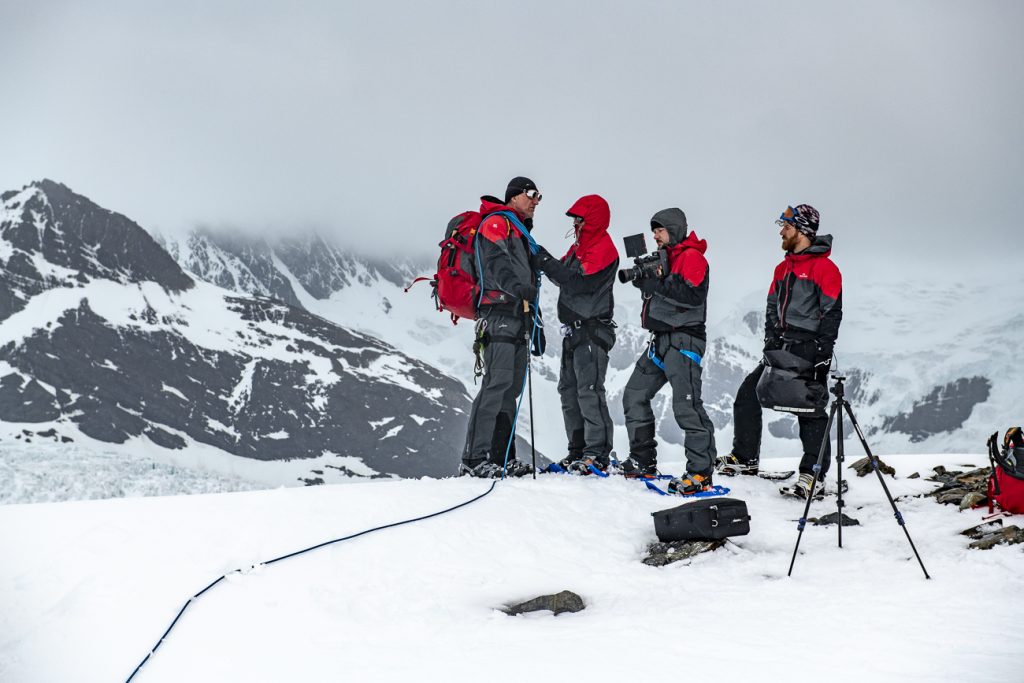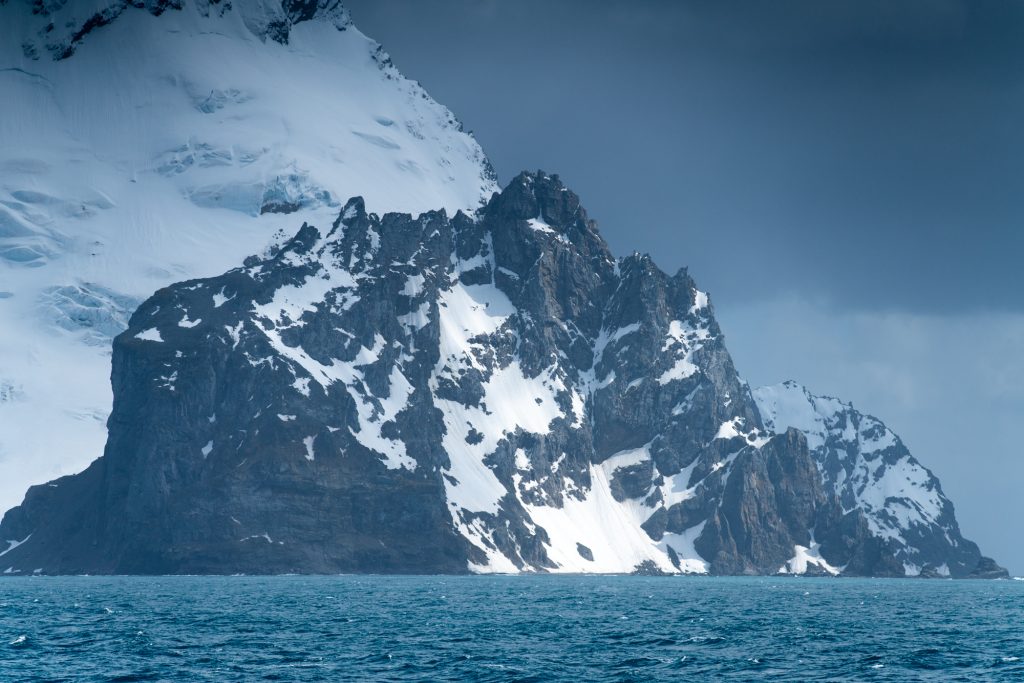After almost 35 years of experience in the film production industry, Electra Manikakis, has produced some of the most eye-catching wildlife films made worldwide.
The Greek Australian has worked for 18 years at SBS and has put her name to works such as Kakadu, Ocean Odyssey and Australia: The Wild Top End. She has also collected an Emmy award for Puff: Wonders of the Reef.
Today she is working with Wild Pacific Media to produce high-end, blue-chip documentary films. Her latest film is Shackleton: The Greatest Story of Survival, which has opened nationally in cinemas on March 9 and is still in select cinemas this Easter long weekend.
In an interview with The Greek Herald, Electra opens up about the making of the film and her career.

From Life on the Reef to Secret Life of Pearls. Which work marked you the most personally and career-wise and why?
I don’t know if I can choose just one production. I’ve been working in this industry for close to 35 years. Each stage has had a significant impact on my career and my personal life. I cut my teeth at SBS Television. I was 17 years old when I started there, and I was lucky enough to work with exceptional people on a broad range of programs during my 18 years there – current affairs programs such as Dateline, Insight, The Movie Show, big live broadcasts such as the AFI Awards (now called AACTAs), as well as various documentaries.
I’m a public broadcasting girl at heart and to tell Australian stories or voice an Australian perspective, in all its colour and diversity, with our accents, imagination and intelligence is really important to me, and it needs to be preserved for the next generation and beyond.
That experience feeds into what I’m doing today. Wild Pacific Media is a production company founded by award-winning directors/cinematographers, Nick Robinson and Caspar Mazzotti. We produce high-end, blue-chip documentary films. Encouraging stewardship of our planet through natural history storytelling has been the mission statement for all the projects we’ve taken on.

In the last eight years, our team have made five IMAX films for the Giant Screen market, and two landmark series for the ABC: AUSTRALIA’S OCEAN ODYSSEY, and most recently, AUSTRALIA’S WILD ODYSSEY. These wildlife documentaries are a new take on wildlife filmmaking. We’re talking about ecosystems and how they function, and giving people the tools to understand the natural world around them with the hope that they fall in love with it, and ultimately want to care for it.
How important was winning the Emmy award for Puff: Wonders of the Reef?

Puff: Wonders of the Reef was Australia’s first Netflix Original commission from LA – which was a big deal in itself. Aside from it being secured during the depths of ‘Lockdown,’ it was an amazing opportunity to make something special for a global audience. It was a real thrill to have something we made “drop globally” on the same day. To top it off with an Emmy Award for Outstanding Nature Documentary, well, that kind of recognition is a big deal for any Australian production.
These awards usually go to the big budget international productions, so having blue-chip natural history made in Australia by Australians is a noble cause. To be honest, we really weren’t expecting to win. My colleague, Peta Ayers and I looked at each other in disbelief when Puff was announced and just sat there frozen in our seats. The Netflix representative had to motion to us to get up and go collect our Emmy.
Tell us about your Greek background. How important is it for you? Does it inspire you?
I’m the daughter of two extraordinary people, Helen and George Manikakis, who migrated from Greece in the 1950s from the islands of Lemnos and Agios Efstratios. Like many other Greeks migrating at the time, they wanted to forge a new life for themselves, support those back home, and garner opportunities for their own kids that weren’t afforded them growing up on little island villages.
Building community played an important role for my family, as did the idea of making a difference, and my dad was great at extending that spirit of community and filotimo across cultures and a broad spectrum of people. They built a wide, extended family that saw our home and weekends busy with people, food and politics.
Witnessing this community spirit and how it binds and builds has really formed who I am and how I engage with the world. Creating meaningful connection and relationships with people and fostering this has been vital in my work as a producer.

I genuinely am interested in people and somehow, I have capacity to maintain that people matrix in my brain and try and stay connected to new people I meet, and connect others that should meet. Over the years it has helped me find stories that need telling, and the right people to tell those stories. It’s also helped me continue to forge some strong bonds locally and internationally.
I’ve noticed that I tend to create families in my workplaces. I’ve come to recognise that a sense of belonging, fostering a common goal and loyal collegiality creates a strong team, and like my parents, I tend to take that extra step to extend this collegiality and community to other production companies and producers to shape a stronger production hub here. Mind you, an invite to the Wild Pacific Media offices for a Friday afternoon drink and some slow roasted lamb on occasion helps that along too.

Can you tell us about the creation of your latest film, Shackleton: The Greatest Story of Survival?
Shackleton: The Greatest Story of Survival is a 90-minute documentary and a 45-minute IMAX experience directed by Caspar Mazzotti and Bobbi Hansel. It reveals the true story of polar explorer Sir Ernest Shackleton and his 27-man crew’s fight for their lives after their only lifeline is destroyed in the most uninhabitable place on Earth – Antarctica.
The film transports you back 100 years using archival footage, re-enactment and original imagery to create the most complete retelling of the greatest survival story from the heroic era of polar exploration. It is told by the man who led the only team ever to have repeated their incredible feat – explorer and adventurer Tim Jarvis, who reveals the enduring legacy of Shackleton’s crisis leadership in the face of impossible odds.

Leadership is the backbone of the film, and the anchor point onto which the directors wanted to thread Tim Jarvis’ modern adventure and the historic endeavours of the crew of the Endurance. It required a deep research process, the casting of a talented voice actor to bring Shackleton’s diaries to life, and the footage of the original expedition by Australian film maker Frank Hurley whose tireless coverage captured the emotions and efforts of the entire crew 100 years ago.

We also had access to the recreation footage from the 2001 IMAX film, Shackleton’s Antarctic Adventure, and our crew travelled to Antarctica and South Georgia at the end of 2021 to film Tim Jarvis’s parallel mission in Shackleton’s footsteps.
Navigating an expensive shoot to Antarctica amidst the end of COVID lockdowns was our first hurdle, and then you’ve got the weather to deal with. There were a few sunny days with calm glassy water which helped capture some breathtaking scenes: walls of ice hundreds of feet high rising from the ocean, and penguins and seals laying around on icebergs as if placed there for the cameras.
Director Caspar Mazzotti tells us that the scenery almost tricks you into thinking it wouldn’t be such a bad place to be stuck… but it only takes minutes for the weather to change, and conditions become unbearably cold. The crew were trudging around with cameras in waist deep snow and climbing sloping glaciers into mountains, roped together to protect themselves from crevasses. They faced the same icy winds experienced by Shackleton and when they took their gloves off to use the cameras or fly the drone, their fingers felt frozen to the core. They could only imagine the hardship that Shackleton and his men endured in the same conditions.

What can people learn from the documentary?
In the film, Tim Jarvis examines Shackleton’s decision-making process, uncovering the incredible leadership qualities that allowed him to save his crew. It’s a template for how we can use his leadership lessons to bring the world together in the fight to save places like Antarctica. 100 years on, climate change has altered the mountains and glaciers that Shackleton traversed almost beyond recognition, and we hope that the images the crew captured for the film shows the impact that climate changes has had on these otherwise pristine landscapes.
I’m inspired by Shackleton’s determination, his ability to compartmentalise and recalibrate, his commitment to the collective and to the bigger picture. I’m also inspired by his drive to make a difference, and that’s a message that I grew up with and one that I’d like to think I pass on to my own children.



